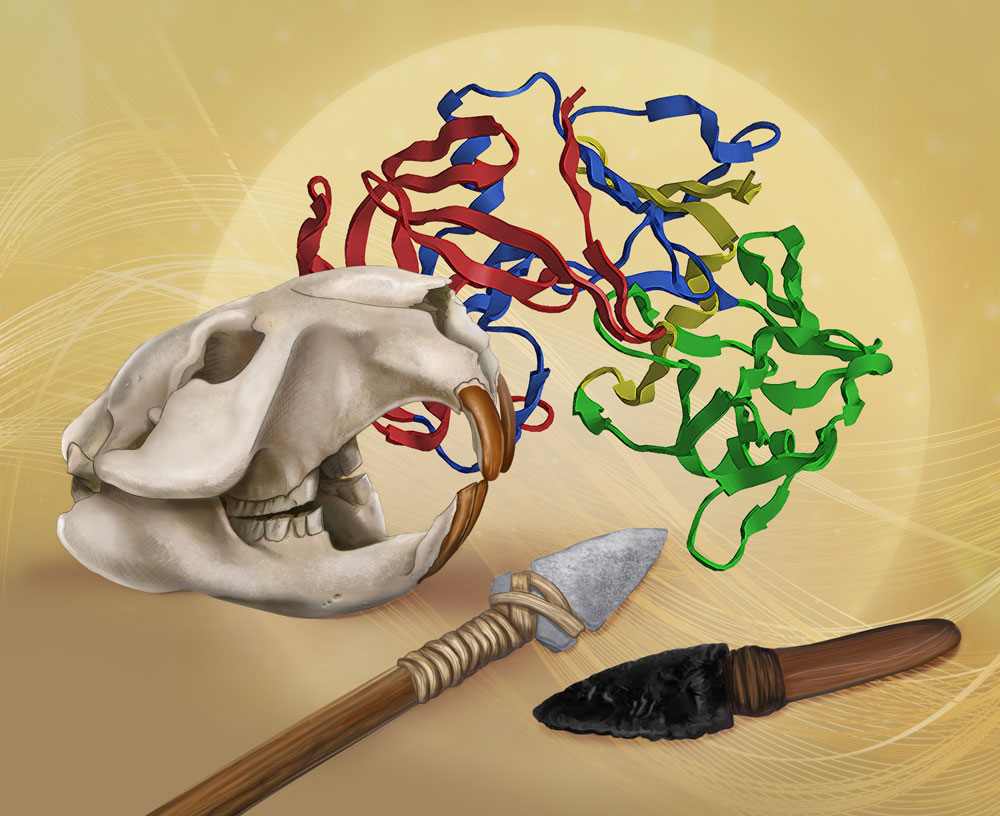Proteomics: Moving Beyond DNA to Study the Past
Posted on Categories Discover Magazine

“It’s the first direct evidence of how the tools were used,” says Nowell. “All of a sudden, a wealth of information is unlocked.”
Detecting species by protein residues on stone tools is especially important for once-marshy sites, like Shishan, which are not conducive to bone preservation.
Although the Shishan excavations have yet to determine which species of hominin was at the site, Nowell’s team found that they were eating everything from Asian elephant and rhino to duck. The diversity sheds light on the hominins’ cognitive skills and ability to hunt very different species.
“It tells us a lot about their social complexity, their technology,” Nowell says. “You don’t go after a duck the same way you go after a rhino.”
Unlike ZooMS, CIEP is noninvasive and nondestructive. Researchers apply antibody-rich blood serum, or antiserum, targeting a specific antigen — say, one found in a rhino — to the sample they’re testing. If the specimen contains rhino proteins, they’ll get a reaction.
Unfortunately, researchers are limited to using antisera collected from living species. That’s why CIEP typically identifies by family rather than genus; genus is deduced later during the study based on knowledge of the animals present at that time and place in the fossil record.
“We’re using modern taxa to find paleotaxa. If something didn’t leave any descendants, we won’t find it,” says Nowell.
But the real problem with CIEP, contend some critics, is more basic.
“Proteins are made up of a series of amino acids that fold into a chain in a structure specific to that protein,” says University of Manchester biomolecular archaeologist Terry Brown. CIEP and similar immunological methods “are based on detecting proteins by using antibodies that would recognize the protein by shape. If they unfold, the antibodies can’t accurately identify them.”
Shishan study co-author Walker, however, dismisses that concern. He says a detection rate of only about 5 to 10 percent is typical when searching for protein residue on artifacts, but he’s confident in those results. Walker cross-tests every antiserum with samples from other species to ensure it’s only identifying proteins from its target, rather than providing false positive results.
“Sure, proteins do degrade, and unfolding can be a part of that process,” Walker explained via email, “[but] a protein does not need to be complete in order to be detected.”
Growing Pains
As with any young field of science, there are growing pains. Researchers who use ZooMS tend to question CIEP’s accuracy; CIEP advocates point out ZooMS’ destructive nature.
While Collins says he’s “not a huge fan of CIEP,” he also appreciates that greater collaboration between proponents of various approaches would be a win for all. “Throughout the field, we’ve each got our own hammer — ZooMS, ancient DNA — and to us everything looks like a nail,” Collins says.
As researchers push the limits of ancient protein analysis, it’s possible that methods more refined than either ZooMS or CIEP will emerge.
“We’re such a new field,” says Cleland. “We’re only scratching the surface of what we can do, and what we can learn.”
[This post originally appeared in print as “Beyond DNA.”]